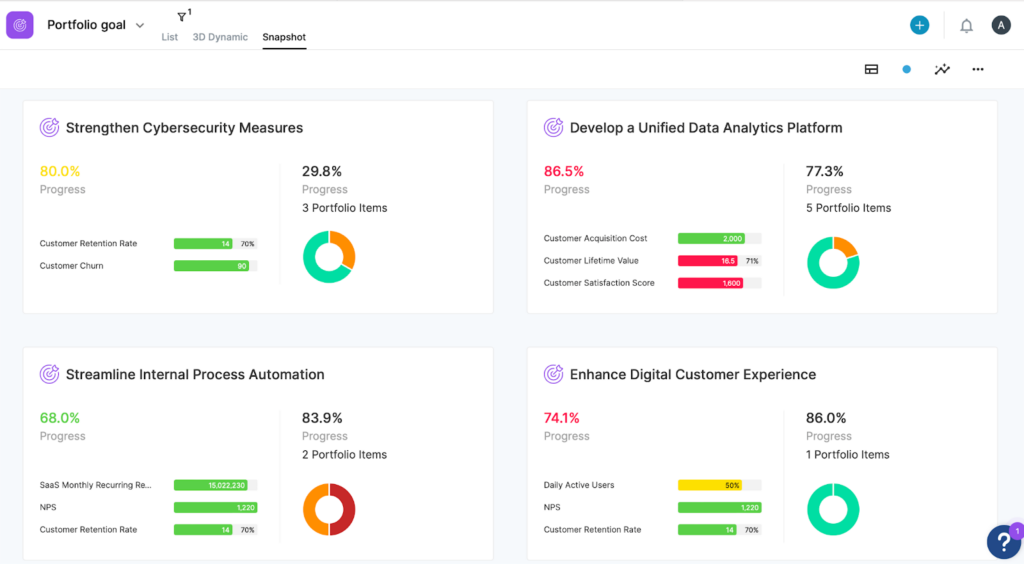In a recent conversation, Dragonboat’s CEO, Becky Flint, had an insightful discussion with Rina Alexin, CEO of 280 Group, a renowned management education organization empowering product teams with the tools and skills they need to excel. This dialogue delves into addressing the main challenges faced in the CPO – CEO partnership—a collaboration that profoundly influences the strategic trajectory and innovation capabilities of organizations.
In this article, we will share 5 key highlights of the CPO – CEO partnership and insights on effectively navigating these challenges.
1. Do You Need a Chief Product Officer (CPO)?
For many startups, the founder or CEO naturally assumes the role of the CPO. In other cases, a mature company can also have the CEO participate in the product process – a scenario that CEO Brian Chesky recently described about his work at Airbnb.
CEOs are deeply connected to the company’s vision and guide the product team accordingly. However, as companies grow and have multiple product lines with larger product teams, the need for a dedicated CPO becomes apparent. A seasoned CPO brings clarity and focus to the product strategy, ensuring it aligns with the company’s growth objectives and market demands.
Learn how to hire and evaluate your next Chief Product Officer here.
2. Transitioning from CEO-Led to CPO-Led Product Org
The decision to hire a distinct CPO marks a critical juncture for a growing company. It often comes at a time when the CEO’s day-to-day focus shifts away from the product portfolio towards broader organizational responsibilities.
Becky Flint’s experience in the world of product leads her to believe that, during this time, a gradual shift is needed from survival mode to strategic planning, where the focus broadens from immediate needs to future-oriented strategies.
The role of a CPO becomes crucial in this transition, steering the company towards a product-led approach and away from potential complacency. The CPO educates teams on managing product portfolios effectively and redefines operations and product strategies, particularly in organizations where growth has been sales or marketing-driven rather than product-centric.
3. How to Drive Business Alignment and Product Alignment
To ensure a successful partnership between the CEO and CPO, it’s crucial to align business objectives with product strategies. This alignment should occur before strategic planning sessions involving other C-suite executives.
Becky Flint recommends a poker-like approach to strategic planning, designed to discover priorities and clear misalignment among leadership, and most importantly, to build trust through open communication.
Here is how to conduct a poker-like planning session:
- Gather key stakeholders: Invite the CEO, CPO, product managers, CROs, CMOs, and CFOs to openly discuss and align on strategic priorities.
- Pose the question: Ask each participant to write down their top 3 strategic priorities for the company and collect the written priorities anonymously.
- Reveal the answers: One by one, reveal each priority to the group. Encourage discussion and debate about each priority, but avoid making decisions at this stage.
- Identify common themes: After all priorities have been revealed, look for common themes and areas of agreement.
- Refine the priorities: Based on the discussion, refine the list of priorities to a more manageable number.
- Build strategic plan: Create an action plan to achieve the agreed-upon strategies and set target allocations for team roadmaps. A product portfolio management tool becomes critical in keeping the plan alive throughout the organization. To see how this comes to life – book a demo with Dragonboat today.
- Monitor and track progress: Connect roadmap and strategic intents and Regularly monitor and track outcome progress on the action plan.
The specific steps may vary depending on the size and culture of your organization, but creating a shared vision for the company’s future and how the product portfolio contributes to it is essential.
4. Building a Strong Product Culture
There are many challenges companies face during the transition from a CEO-led to a CPO-driven product strategy, often arising out of changing leadership dynamics, strategic focus, and operational adjustments.
For this reason, it is crucial to foster a strong product culture. This transition is not merely about adding a leader, but about a fundamental shift in the way a company operates. Companies are advised to redefine their operations and product strategies to foster a product-centric culture, which is crucial for long-term success.
Common challenges to a product-centric culture include a lack of clarity regarding the roles and responsibilities of product managers, difficulties in managing stakeholders and alignment, and challenges in implementing product strategies consistently.
5. The Role of Data and Decision-Making
CPOs should take a data-driven approach in product management. To put this into practice, it is recommended that product leaders establish a data taxonomy, covering business, customer, product performance, and development costs. The entire product team must understand and use this data, fostering a product leadership mindset throughout the organization. This data-driven approach promotes transparency, visibility, and alignment within the team and across the organization.
CPOs should consider implementing a product portfolio management platform that integrates multiple data sources, to prioritize trust and transparency, ensuring alignment between strategic intent, goals, product roadmaps, and decision-making processes. Having all critical information in one place reduces misalignment and supports informed decisions.

The collaboration between a CPO and CEO is pivotal for any company aiming for success. Understanding when to bring in a CPO, transitioning to a CPO-led product organization, aligning business and product strategies, fostering a strong product culture, and leveraging data for decisions are key aspects of this partnership. By addressing these highlights and challenges, businesses can enhance their product management practices and drive innovation and growth.
To further explore the world of Chief Product Officers and their partnership with CEOs, join the conversation in the CPO series. Additionally, learn about how Dragonboat assists CPOs and CEOs by engaging with our product experts.
About Dragonboat
Dragonboat is the sponsor of the CPO Series, because we value the CPO-CEO relationship, and are committed to helping CEOs and CPOs operationalize strong product cultures within their organizations.
Dragonboat’s platform helps teams deliver products that accelerate business outcomes. Its award-winning responsive product portfolio platform helps teams optimize and improve every stage of their product development lifecycle.
Ready to see how Dragonboat strengthens the partnership between CPOs and CEOs? Schedule a demo with one of our experts today.
[elementor-template id=”12730″]



